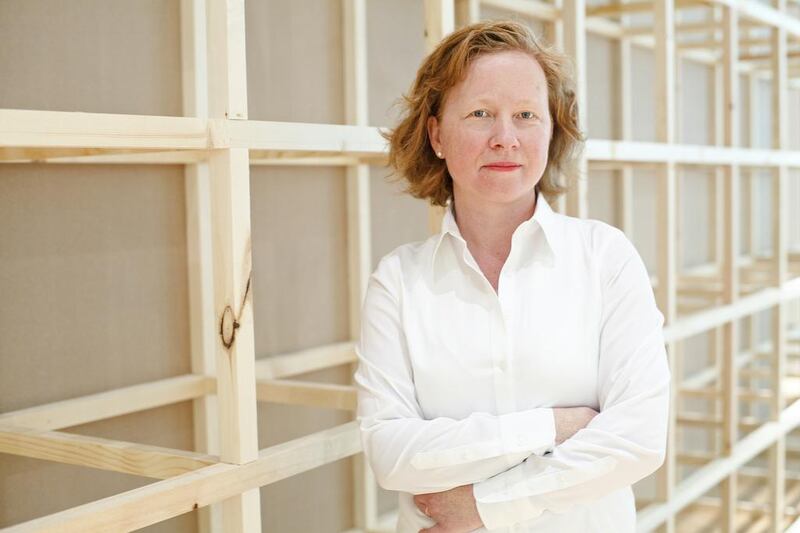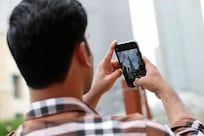There’s a moment in most illusions that’s called the reveal, an intentional twist that surprises the viewer, plays with their mind and changes their frame of reference forever.
Edgar Rubin’s vase image is one of the most famous, a figure-ground exercise that shows a vase and opposing faces in profile. You can only see one at a time but once you’ve seen both, your eyes switch constantly and involuntarily between the two.
Renaissance artists such as Piero della Francesca played even subtler games with shadows in paintings such as The Flagellation of Christ, including multiple and contradictory light sources in their paintings to suggest the simultaneous presence of the natural and the divine.
Both techniques and more are on display in On Site, the inaugural exhibition at the new New York University Abu Dhabi Art Gallery on Saadiyat.
The show is ostensibly about landscape and the built environment and the relationship between the natural and the man-made, but a closer inspection reveals a series of works that use these categories to ask more profound questions about how we see, what we see and the role of culture in both.
As with the divine light in della Francesca’s flagellation, the shadows in Mary Temple’s trompe l’oeil murals are almost imperceptible, but once you notice their leaf shapes stretching across the walls of the gallery, you realise they are the product of a light that does not and cannot exist.
In Re-Mapping Al Fahidi, the Emirati artist Ebtisam Abdulaziz may employ the language of cartography, but there's a vertiginous moment when the work's flat planes of yellow, blue and white, which first appeared as contours and coastlines, flip to become horizons and roofs.
“If you don’t know the space or the reference, it may look like a map,” explains Maya Allison, the exhibition’s curator and the director of NYUAD’s new gallery. “But suddenly you realise you’re looking at a skyline and you experience this amazing shift in perspective. That visual shift is incredibly relevant, not just to this show but to the gallery and to being on Saadiyat Island.”
Allison admits that in many ways, her aim is to turn the new 7,000 square foot space into a classic example of a North American university gallery.
“The typical mission for an American university is to have a gallery dedicated to producing exhibitions roughly three times a year,” she says. “It’s sort of like having a good library. They want the students to have access to original works of art, to experience them first-hand, and to see in action what they’re studying in art history, contemporary art and in art practice.”
For Allison, however, the relative absence of other non-commercial art spaces in the capital means that NYUAD’s gallery will be a very different operation from its sister institution, the Grey Art Gallery in New York.
“The idea of our gallery is that it will be a space that will serve both the university and the public equally and bring them together in a way that creates dialogue,” the curator explains.
“It’s more experimental than what you might get at other places because we have some freedom to experiment with exhibition formats and topics and guest curators. It’s also non-commercial, so we aren’t limited by whether we can sell something. It’s really about creating a meaningful space for the communities we are serving.”
If the needs of the community are to be addressed, Allison insists, her gallery cannot simply import shows but must mount exhibitions that are relevant to a local audience, hence the ostensible theme of On Site.
“I think that as the art and exhibition community grows and changes, so will our mission but right now our goal is to do shows around three themes: one is landscape and the built environment, another is Islamic art and culture, the third is art in global dialogue. These themes are very broad, non-limiting and are relevant for the local audience.”
For Allison, On Site's star exhibit, A Room from Tate Modern by the Pakistani artist Rashid Rana is a case in point. Clad in a grid that's reminiscent of a sculpture by Sol Lewitt, the installation consists of a giant cube that contains another trompe l'oeil, a "room" from the London gallery, recreated using nothing more than digitally printed wallpaper.
“I first saw this piece when it premiered in Dhaka, Bangladesh,” Allison explains. “The idea of taking a room from the Tate and putting it in Bangladesh immediately brings to the surface conversations about how culture affects how you see art, how art is understood differently in different cultures and what it means to show art in different cultures. For me that is a central focus for what the gallery is doing here.”
Nick Leech is a features writer at The National.










